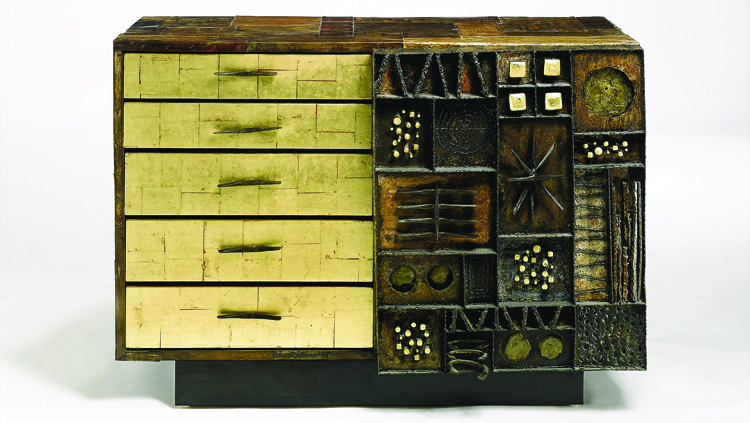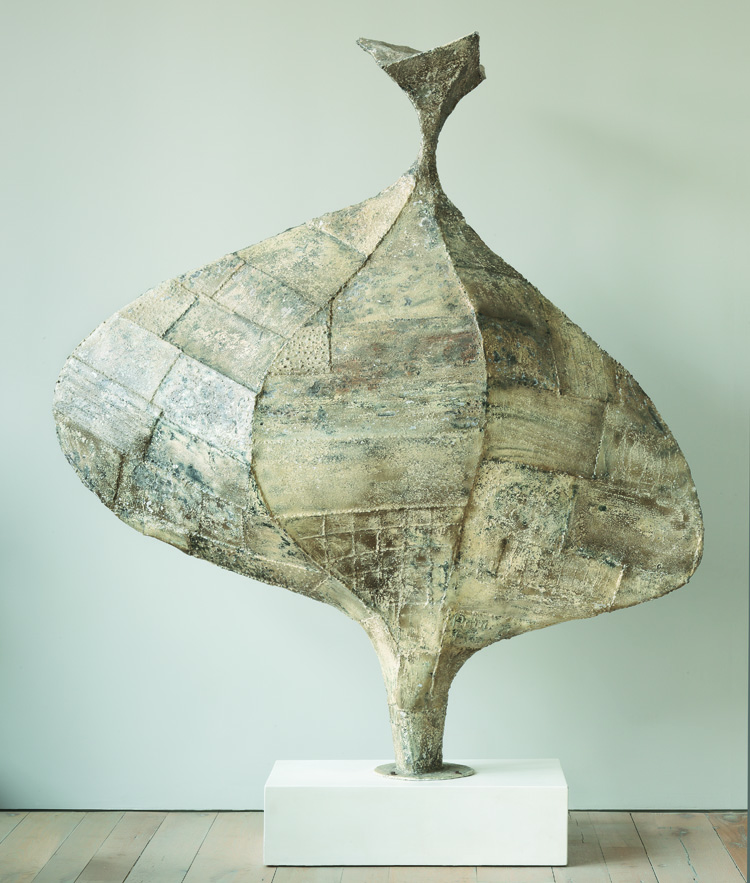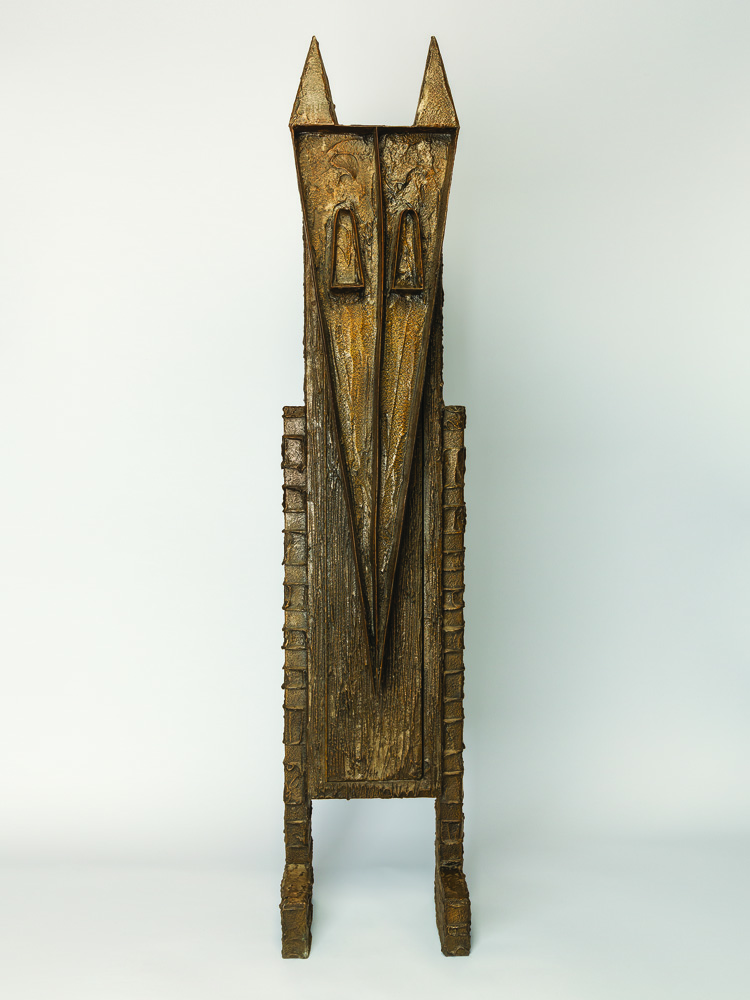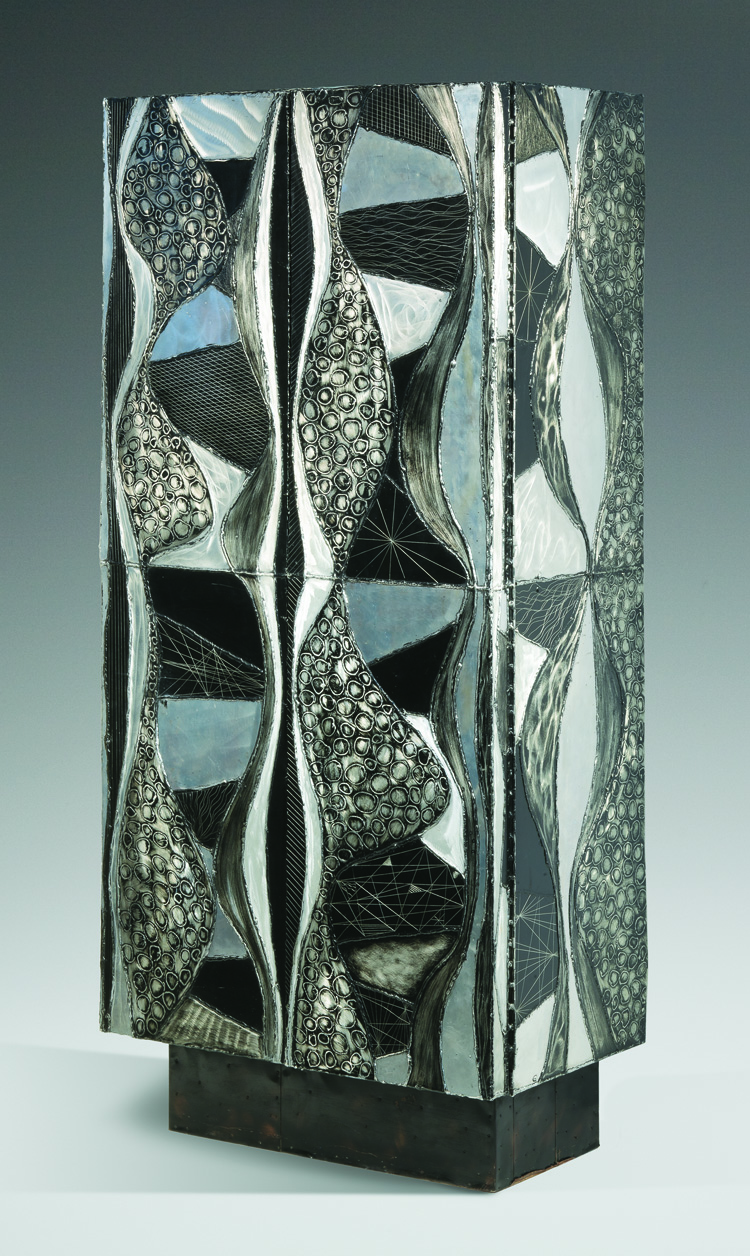Paul Evans at the Michener Museum
Crossing Boundaries and Crafting Modernism
The Michener Art Museum has organized the first retrospective of the work of Paul Evans (1931–1987). This comprehensive survey will document Evans’ role in the midcentury American studio furniture movement, and his approach to furniture as sculpture and abstract composition. The exhibit encourages a fresh look at the practice of making objects in the third quarter of the twentieth century as it examines the dynamic career of an artist who evolved from metalsmith to furniture maker to designer, shifting his focus from the New York craft world to the national world of design.
Evans’ approach to furniture-making defied traditional notions of craft. Pursuing furniture as sculpture and abstract composition, designer-craftsman Paul Evans consistently pushed boundaries with his innovative approaches to metal and furniture-making, his work revealing the fascinating cross currents of sculpture and design. Using his welding, metallurgy, and jewelry design skills, Evans constantly experimented with new materials—traditional and synthetic—technologies, and designs. Borrowing techniques from industrial manufacturing, his shop operated much like an industrial laboratory, and his shop workers invested their furniture with an expressiveness that is quite distinctive in the realms of craft and design.
Opening at the Michener, the exhibit will travel to Cranbrook Art Museum from June 21 to October 12, 2014 (www.cranbrookart.edu). Paul Evans: Crossing Boundaries and Crafting Modernism will be comprised of some sixty-five works, spanning the artist’s entire career with choice examples of Evans’ early metalwork and jewelry, collaborative pieces made by Evans and Phillip Lloyd Powell during the fifties when they shared a studio, as well as a comprehensive selection of Evans’ studio work representing his sculpted steel; verdigris copper; copper, bronze and pewter; argenté sculpted bronze; and cityscape techniques. The show will also include examples of Evans’ sculpture as well as a selection of work he produced for Directional Furniture Company.
Evans’ highly innovative experimental approaches to metal have attracted an international following, especially over the past decade. Says New York dealer Todd Merrill, “Evans left a legacy as the father of the modern art furniture movement. His was one of the first companies to embrace original furniture design in America; it is not derivative of any other style.” Merrill adds, “Evans worked in a whirlwind of creativity, producing new lines and new techniques every six months for nearly twenty years while working with Directional Furniture from 1964 until 1982.” Merrill created a video biography of Evans that will be on a constant loop at the exhibition and on his website (www.toddmerrillstudio.com), a promo cut of which will be shown in area movie theaters as a trailer. He is also lending several objects to the exhibition, and recently sold The Onion, illustrated here, to a private client.
David Rago of Rago Arts and Auctions, who has sold a number of objects in the exhibition, shares “We’re very excited about the show because it brings the work of Paul Evans full circle. From a relatively unknown local designer we saw the birth of the secondary market for his designs in the early 1990s, mostly at auction. We were fortunate enough to be located in the center of the New Hope School of furniture design, some have said geographically blessed, so we had a ring side seat for what was to come.” He adds, “Starting around the year 2000, we noticed that the interest in Evans’ work went far beyond the east coast of the United States. Initially, we sold Evans to clients in London and Milan, but it’s grown to include buyers from many of the major cities in Europe. At an auction earlier this year we had four European phone bidders on a single lot. Some think of Evans as quirky and aggressive,” says Rago, “but his is an aesthetic that takes some patience, as well as an understanding of what exactly went on in New Hope back in the day. The Michener show will bring him home again, and we are delighted to support their efforts in celebrating a local master."
The Pew Center for Arts and Heritage has awarded major grants for the exhibition project; and its support has made it possible to assemble an exhibit team and group of writers for the accompanying publication (Paul Evans: Crossing Boundaries and Crafting Modernism) that includes Edward Cooke, Professor of American Decorative Arts, Yale University; Glenn Adamson, the newly appointed director of New York’s Museum of Arts and Design; Gregory Wittkopp, Director, Cranbrook Art Museum; Robert Slifkin, Assistant Professor, Modern and Contemporary Art, New York University; Helen W. Drutt English, Founder/Director, Helen Drutt: Philadelphia; and Kimmerle. Additional generous support has been provided by Rago Arts and Auction Center and numerous dealers, collectors, and other auction houses.
March 1-June 1, 2014
Michener Art Museum, 138 S. Pine Street, Doylestown, PA
For information call 215.340.9800 or visit www.michenermuseum.org
To read more about Paul Evans click here





































